About 5 years ago, when I was still in my Photography college in Australia, our teachers would regularly introduce us to the new and noteworthy Australian photographers' and digital artists' work. Among others there was one artist, whose work really grabbed my attention and I have been watching her growth and success ever since.
Her name is Alexia Sinclair, she is a highly skilled Fine Art photographer and a brilliant digital artist based out of Sydney, Australia.
She is best known for her lavish fine art series, The Regal Twelve, that she produced over a three year period for her Master of Fine Arts.
I have been a huge fan of Alexia's work for a very long time. Needless to say I was very happy to hear back from her after I approached her with my interview request. And just a couple of weeks later I had an even better reason to jump for joy - I found out that Alexia Sinclair and I are both invited to speak at the upcoming Nikon AIPP (Australian Institute of Professional Photography) Event 2014 in Gold Coast, Australia in June 2014.
There's one inspiring fact I'd like to mention (especially for our female readers): Alexia just had a baby girl - Heidi Sinclair-Hill - four months ago, but it did not slow down her professional life a bit. She is now releasing her new gorgeous photo collection A Frozen Tale along with a beautiful and inspiring BTS video, and a mind-blowing 360-degree photo panorama from the shoot, which I am pleased to share with you today as well.
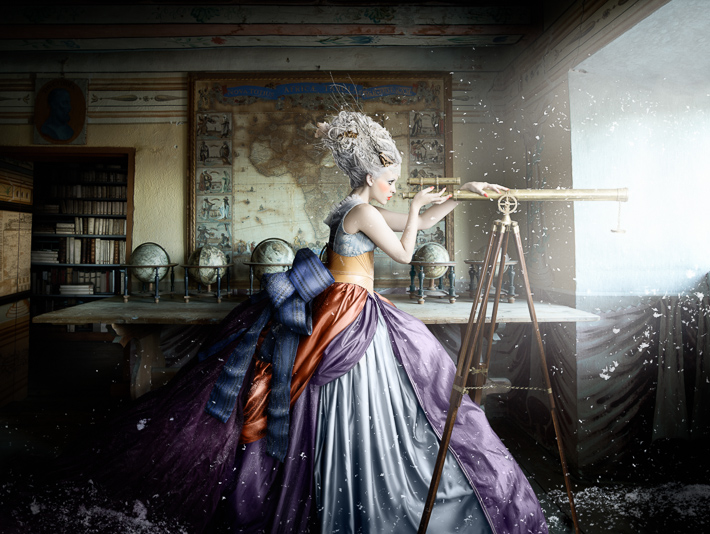
So, allow me to tell you just a little bit more about Alexia's background before we get down to the interview.
Alexia admits that it's her background in digital media, photography, painting, sculpture and drawing that shaped her unique visual style and won her a swag of awards and scholarships. She has exhibited her artworks in museums and galleries throughout Australia, and internationally at festivals and biennials in France, Sweden, China and Korea. She also produces polished advertising campaign work and editorials for clients such as Qantas, Qld Ballet [Queensland Ballet], NZ Opera [New Zealand Opera], Visa, Marie Claire and Harper's Bazaar magazines.
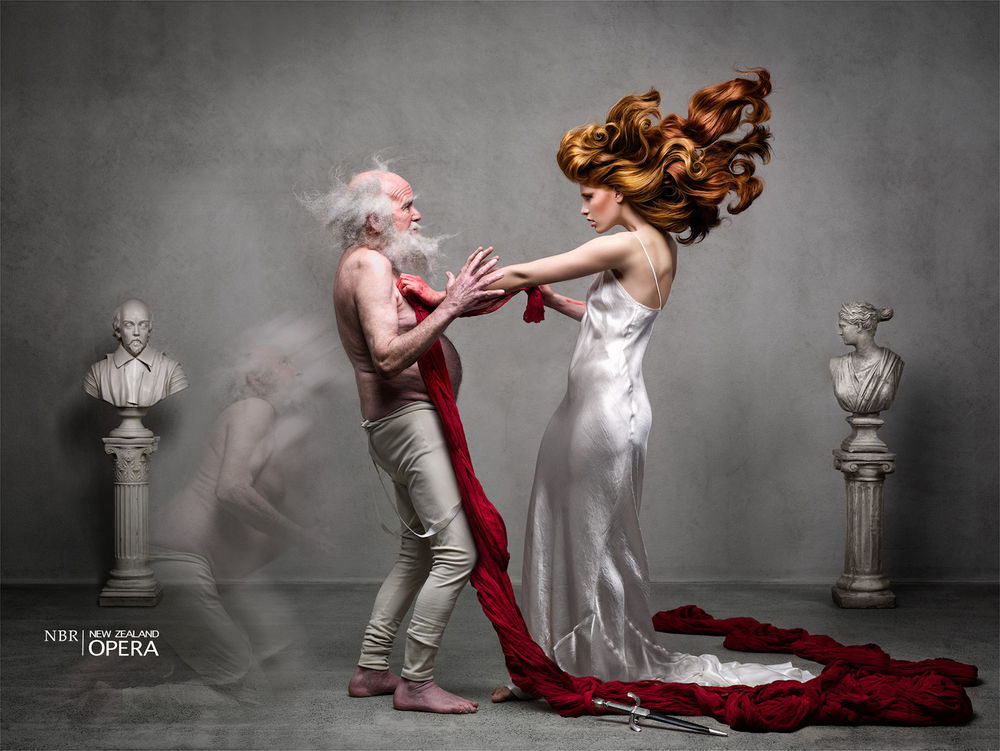
Her latest series that I've mentioned above, A Frozen Tale, Alexia shot in a castle in Sweden following an invitation from the director of The Royal Armoury of The Royal Palace in Stockholm.
Welcome, Alexia Sinclair
Julia: How long has it been since you first picked up a camera?
Alexia: My parents gave me my first camera when I was ten. With a background in dance and performance, I'd always loved to be in front and behind the camera. I purchased my first SLR when I was 17 to take with me to New Caledonia for my first trip overseas alone.
How long had you been shooting until your first publication and award?
I first exhibited in sculpture when I was 15 and have exhibited my photography work extensively ever since. My work has been featured in newspaper critiques throughout the years.
My first magazine spread was in Harper's BAZAAR when I was 31, after winning the Harper's Bazaar Canon Fashion Photography Award. That led to a series of National awards and exhibitions in premier spaces like the Australian Centre for Photography, and international shows in China and France.

Did you get into photography while in Art School or later while studying at the University of Newcastle?
I studied photography in high school as an elective for my HSC [Higher School Certificate], and it became my major in art school at the National Art School. My study at the University of Newcastle was all about digital photography. Before then, everything was analogue in my world.
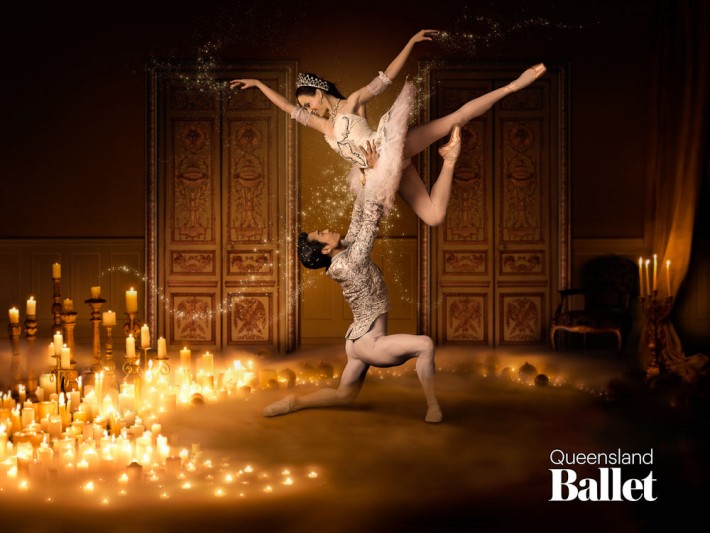
Do you remember how you got the idea of your first large project? How long your first major project took you from the time you came up with the idea to the day you shared the final images with the world?
The first large series I produced was in art school and it was all about Ophelia, the tragic Shakespearean character. I'd fallen in love with the Pre-Raphaelite painters and they heavily influenced the style and subjects of my work. This is when I first started introducing symbolism into my work.
My first large digital series was The Regal Twelve. I produced this series for my Masters of Fine Art, and I was inspired to produce a series of noble portraits because I'm fascinated with history.
For this series I published a 22,000 word exegesis on the work, and spent 6 months traveling through Europe capturing the background landscapes and architecture that formed the stage for my Queens. Eventually, the series took me three years to produce, with the travel, exegesis, costuming, photography, and complex postproduction.
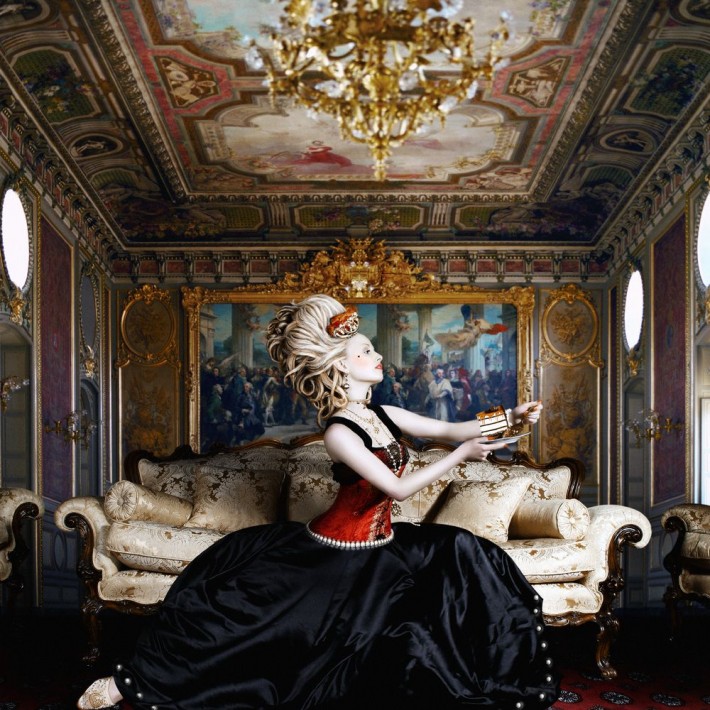
I remember reading about how you prepare for your big projects a few years ago, it would be great if you could walk us through your prep process and share some of your sketches and BTS images - that was very inspiring!
Producing the work I do is much like a painter producing a piece of artwork. I begin almost every artwork with a pre-visualized image. I then work through a process of breaking down the piece into components that I work in post-production to combine into my original imagined artwork.
Of course, this process often means the work evolves into something completely different than what I initially envisioned.
 Alexia is also the model for this artwork
Alexia is also the model for this artwork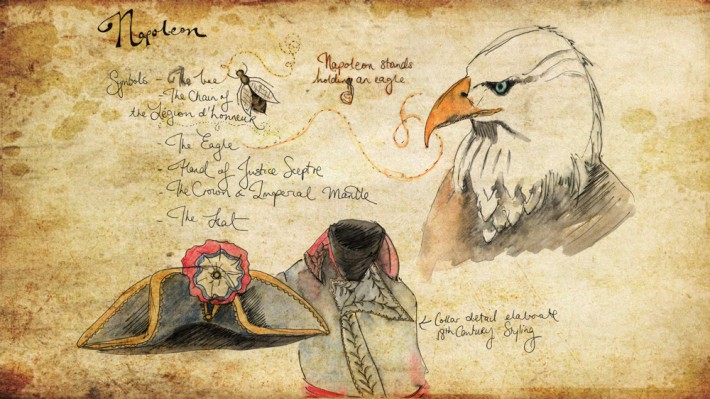

Your style is so distinctive and it is obvious that you are very skillful with lighting/photography and digital painting. How long have you been working in Photoshop? Are you self-taught in photo-manipulations or was learning Photoshop a part of your formal education?
I started learning Photoshop 14 years ago (2000) when I entered the third year of my schooling in Fine Arts at the University of Newcastle to major in digital studies. After that basic introduction to Photoshop, I built my skills throughout the years doing both teaching at University, and working as a retoucher for commercial photography studios.
I took on lots of work with steep learning curves, and read lots of books. This was all pre-internet. We were on dial up so we all studied Photoshop in books. This meant lots of people figured things out for themselves because you couldn't Google something quickly.
I really started to build a style quite unintentionally and organically as I began to incorporate my traditional training in illustration and painting into my photography in Photoshop. My work has a distinct style because I taught myself how to do this with lots of experimentation.
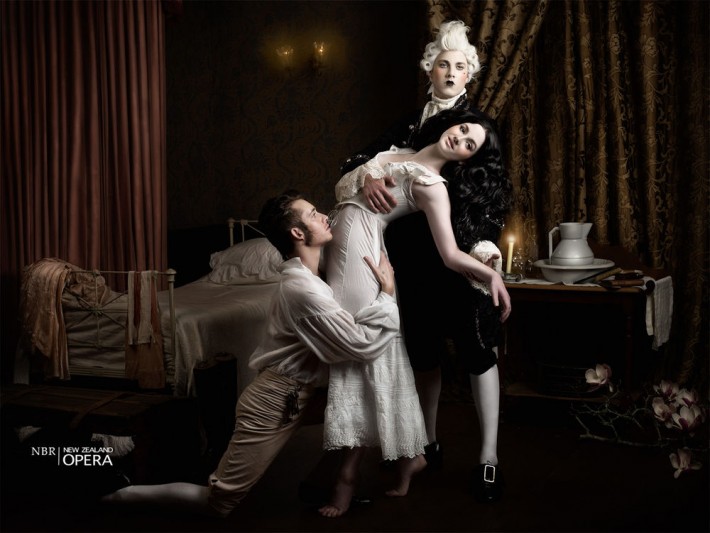
Do you have a favorite project that you created? Do you ever feel like you like some of your artworks less as time goes by and your photography and digital painting skills improve?
Actually, I've always imagined that would happen because I felt frustrated with my work when I first began working digitally. But by the time I finished producing The Regal Twelve, I felt like I'd really honed my skills and I haven't felt like that since. In fact, I produced my Marie Antoinette in 2005 and she's still one of my favorite pieces.
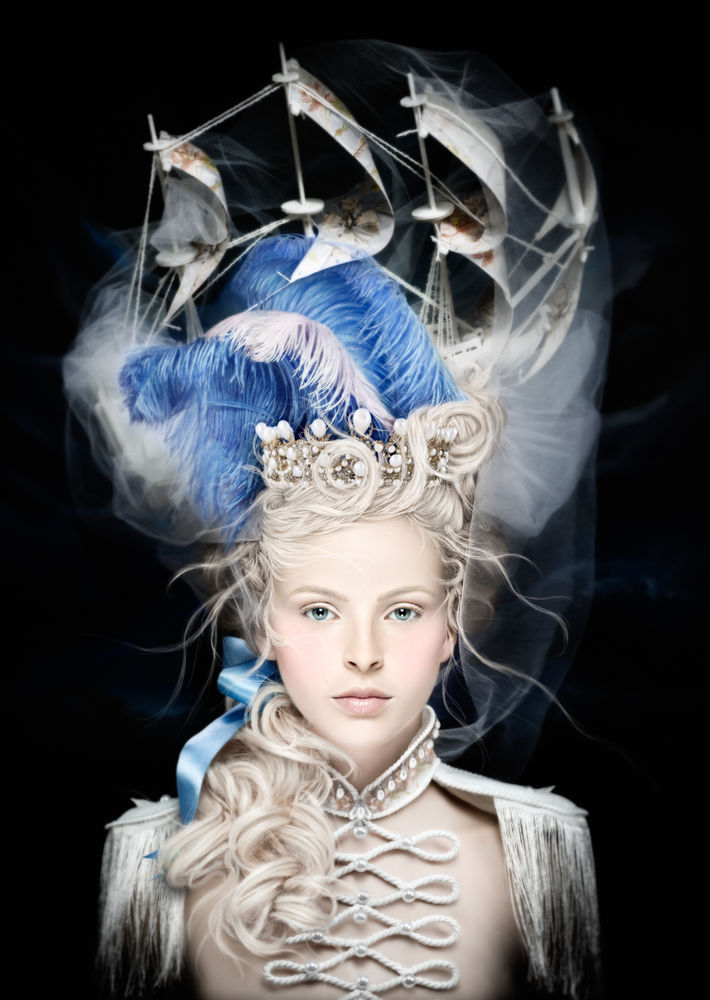
Do you ever go through down times when you are not happy with your own work or skills? Do you ever face "creativity blocks"?
I rarely experience creative blocks these days. But I remember when I was first starting out, it took me a long time to find my style and to come up with themes that really interested me.
When I was in second year at art school, I went to the library for some inspiration and ended up in the painting section pouring over the works of the Pre Raphaelites, Caravaggio, Botticelli and still life works of the 16th and 17th centuries. Suddenly my mind was ablaze with creativity, and I'd found my muse.

It's so important to remember what excited you about making art in the first place, and return to your childhood loves. Don't mimic other people's art, but work out what it is about that art that you really love and apply that as a new layer to your work. And when all else fails, take a little time out away from the studio.
If I am stuck on a piece I'm working on, a great big walk through a forest can free my mind, and suddenly I realize I'm visualizing exactly what I want to do and can't wait to get home to start.


For your major projects, how many people are normally involved in the production? How many hair stylists worked on your Les Antoinettes collection? Do you work with the same creative team (hair stylists, makeup artists) or do you prefer working with different teams on different projects?
I typically use a tiny team on my projects. I do all of the shooting and post-production on my work. My husband and producer James Hill does my lighting, and I almost always work with a makeup artist named Sahra Bull. She's an amazing body paint artist I started working with while creating my series The Regal Twelve.
Hair is a different story all together. I have Sahra (or another hair artist) build the base with real hair, hair extensions, and wire frames, and then I hand illustrate the entire hairdo.
Often I'll make a whole new style by combining hair pieces and playing with it using hand illustration. You can see this in the behind the scenes video for my artwork Cabinets of Curiosity from A Frozen Tale.
When I'm working on a commercial project with a budget, I usually work with larger teams of people because time is of the essence. I also worked with a really large team for A Frozen Tale because eight of these artworks were shot on location in a castle in Sweden.
There were 40 people involved in this project from assistants, makeup artists, dressers, ironers, conservationists to move museum furniture and props, models and curators. It was epic!
Check out this amazing BTS 360º Panorama from the shoot:
We actually did twelve shoots over two days. Because the castle is also a museum, they were very strict about what could be used in the castle. We couldn't touch any of the priceless furniture or walk around unattended. There were no smoke machines allowed or animals. So these components were all from the shoots I did back in Australia to comp into the artworks. Even the water coming out of the jug in The Feast is something I shot in the studio.

 Alexia is preparing for the shot
Alexia is preparing for the shotCould you please tell us a little bit about the inspirations and how long you had been working on your A Frozen Tale collection? How did you come up with the idea? It looks fantastic!
Early in 2013, I woke up to an email from The Royal Armoury in Sweden, inviting me to take part in an exhibition at the Royal Palace in Stockholm. The exhibition was based on the life of Queen Christina of Sweden, one of the inspirational women from my Masters series “The Regal Twelve”.
It was a very exiting invitation and of course, we planned to travel to Sweden to attend the opening of this exhibition at the Royal Palace along with Swedish princesses and aristocracy. What a fairy tale!
Wanting to make the most out of my journey to Sweden, I requested to photograph one of the princesses. Their response was an invitation to shoot at one of their famous castles instead. This is where my latest exciting series “A Frozen Tale” began its journey.
Having the opportunity to shoot in such an incredible location as Skokloster Slott meant I wanted to produce a series as powerful as the castle itself. That is quite a challenge because it’s so magnificent.
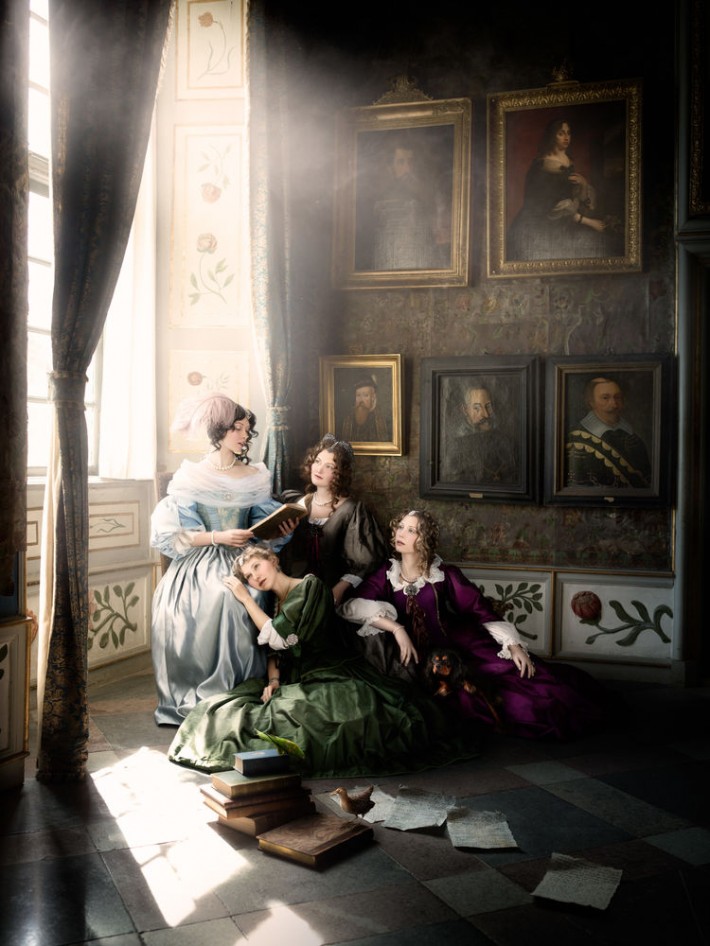
I like to produce narrative pieces, so I started by researching those important historical figures who had visited the castle over its lifetime. I also studied 17th century paintings to get a feeling for the period and this is what I got truly swept up in. Artists like Johannes Vermeer did so much exploration of middle-class life, showing ordinary people doing ordinary things.
Ultimately, the series explores two different worlds within the same castle walls. The famous ruling class visitors of Skokloster Slott, and the people in the shadows, the middle and working-class who run the castle. Like the wet-nurse feeding in the Countess' Drawing Room, or the maid watering the tulips in The Feast.

 Alexia and the team preparing for the shot
Alexia and the team preparing for the shot
Some of the challenges I faced with this project were that I was 6-7 weeks pregnant during the shoot, and the castle was 80 km (50 miles) out of Stockholm in the Swedish countryside. The castle was set on a frozen lake and the rooms are not heated to remain archived.
There was also no electricity. We could only find six days in our schedule for Sweden, and had to do 60 hours of flying in those six days during my morning sickness phase. This was a large scale project and we had around 40 volunteers involved including lighting assistants, models, hair and makeup artists, dressers, and conservationists just to name a few.
Volunteers flew from all over the world to be involved in this project. We needed to feed them all and manage everyone's roles, and for most people, English was their second language. It's been quite a dramatic journey!
It looks like your career sky-rocketed after you created a few elaborate personal projects. Would you recommend emerging photographers to invest more of their time into working on personal projects?
I studied Fine Art from a young age, and part of that program is the development of the exhibiting artist. We didn't learn how to work commercially with clients, only how to produce soulful work to exhibit, with no known outcomes or understanding of how to fund such things.
It's a rather archaic and luxurious idea in this day and age, where there are virtually no upper class portrait commissions, nor are there enough art collectors or patrons. Artists today need to be extraordinarily crafty to make a basic living.
This is how I came to work commercially, to fund my personal projects. People are fascinated in the behind the scenes from my shoots, so we spend a lot of time documenting this. This year we're releasing tutorials on all facets of my creative process, and have recently released a Photoshop Masterclass from my project A Frozen Tale. This is a way for me to produce more and more personal work, because the small amount of funding tutorial purchases gives me allows me to fund each new project.
Because I'm really passionate about working on my personal projects, I often put years of work into one series. I often have several personal projects on the go at once, along with commercial projects too.
Shooting personal projects is so important because it tells your clients the kind of work you'd like to be producing, which is often very different to the work you do commercially. It's your portfolio or award pieces that build your name and/or brand, and hopefully give you the power to shoot projects for other people in the style you'd prefer.
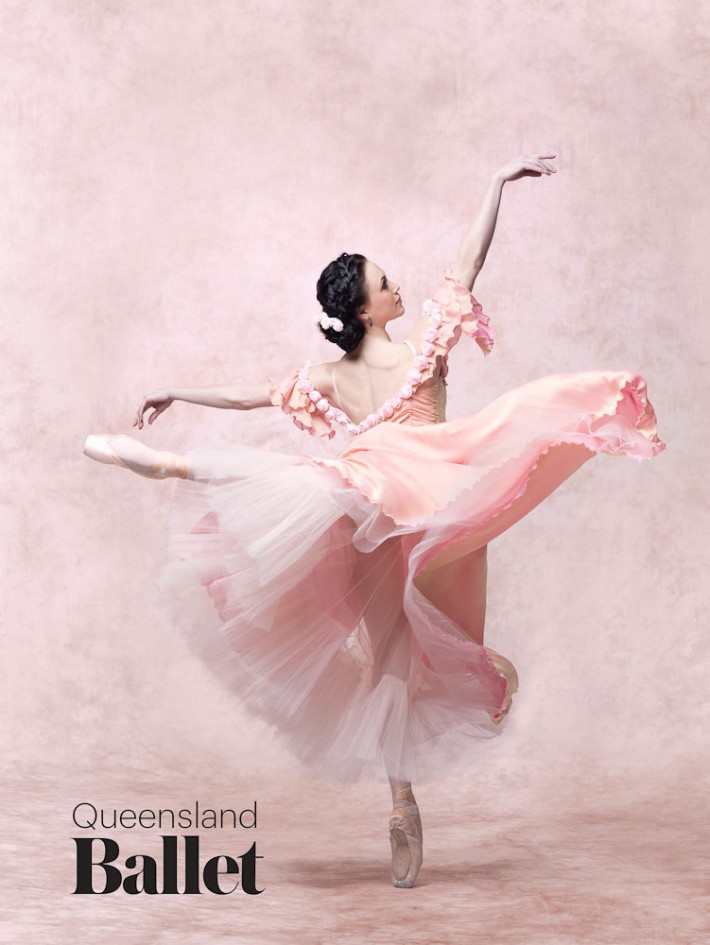
Do you already know what your next large project will be? Could you please tell us a couple of words about it?
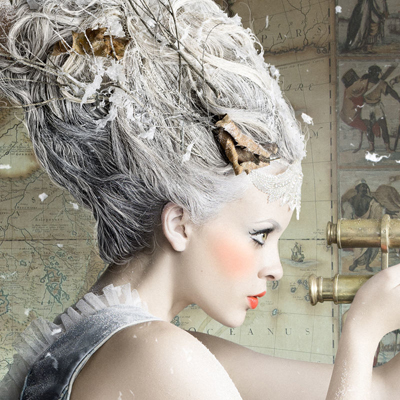 I've got lots of exciting projects I'm working on right now to release in the future! This month I'm releasing a composite artwork to add to my series A Frozen Tale. I shot the whole series on-location in Sweden, and at the end of two exhausting days, I spotted an extraordinary room on our way out of the castle.
I've got lots of exciting projects I'm working on right now to release in the future! This month I'm releasing a composite artwork to add to my series A Frozen Tale. I shot the whole series on-location in Sweden, and at the end of two exhausting days, I spotted an extraordinary room on our way out of the castle.
Without the time or resources to shoot another character on-location, I shot a background plate of this room to produce a composite artwork later. I shot a model for this artwork in the studio in Sydney when my daughter was only 17 days old, and we're just gearing up to release this new artwork and a behind the scenes video shortly.
Titled The Cabinets of Curiosity, this new artwork celebrates The Age of Discovery. The castle, Skokloster Slott, is described as a cabinet of curiosities inside a cabinet of curiosities, and this room is filled with magical maps and globes displaying the wild things of new worlds of the 17th century in intricate detail.
Forming the hero image for the collection, the frosted fantasy figure embodies the series title: peering through a telescope out to the frozen lake beyond, as snow flakes drift into the castle.
I hope you've enjoyed Alexia's beautiful images and her very open answers. There's so much I have learned from her not only through her BTS and time-lapse retouching videos over the years, but I am also amazed and motivated by how she overcomes all the obstacles on her way as an artist, and manages to produce such amazing artwork again and again.
You can see more of Alexia's work on her website www.alexiasinclair.com.
And follow her journey with her news and updates on Facebook: Facebook.com/alexia.sinclair.photographer.
Alexia's gorgeous artworks are also available for purchase on her website in the Buy Art section.

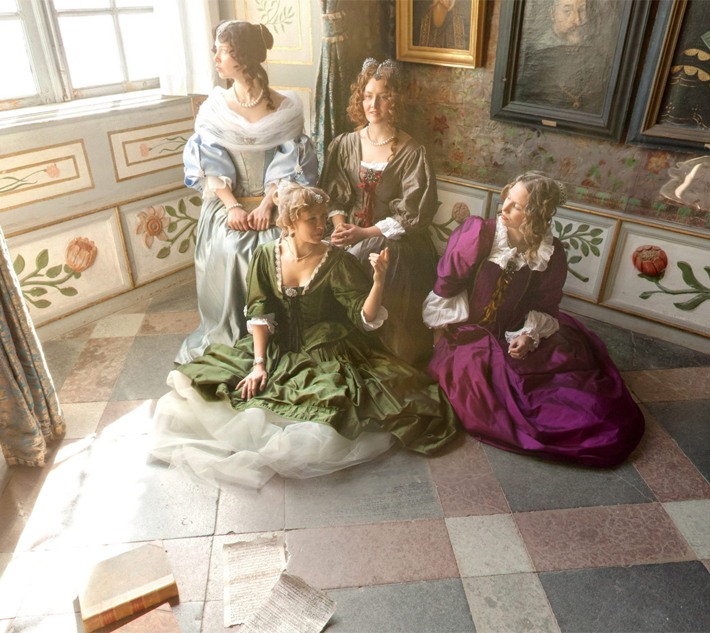
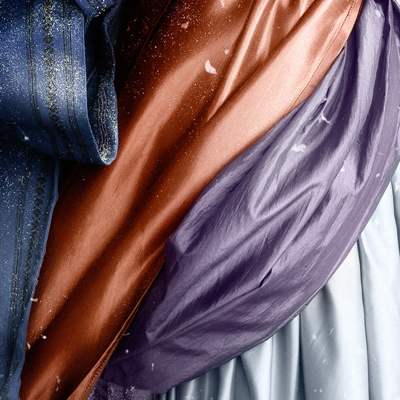
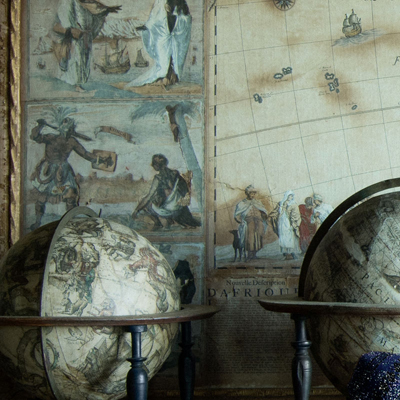






Amazing talent. Really enjoyed this.
Thanks for this amazing article. Love your work Alexia, and kudos for your success <3
Very inspiring article. Mind blowing images. Thanks!
Man, theyze people, and then theyze other people!
So great! Some days I get so caught up on the commercial
aspects of photography that I forget why I loved taking pictures in the first
place. You’re a great inspiration and I will have to get back to the sketch
book, I think it’s time for a personal project!
great talent !!!
Lived in Newcastle 3 years, had no idea they had digital photography courses at the University.
Inspiring and amazing, I am following her works and backstage videos in the past months, also love her projects dedicated to scientists